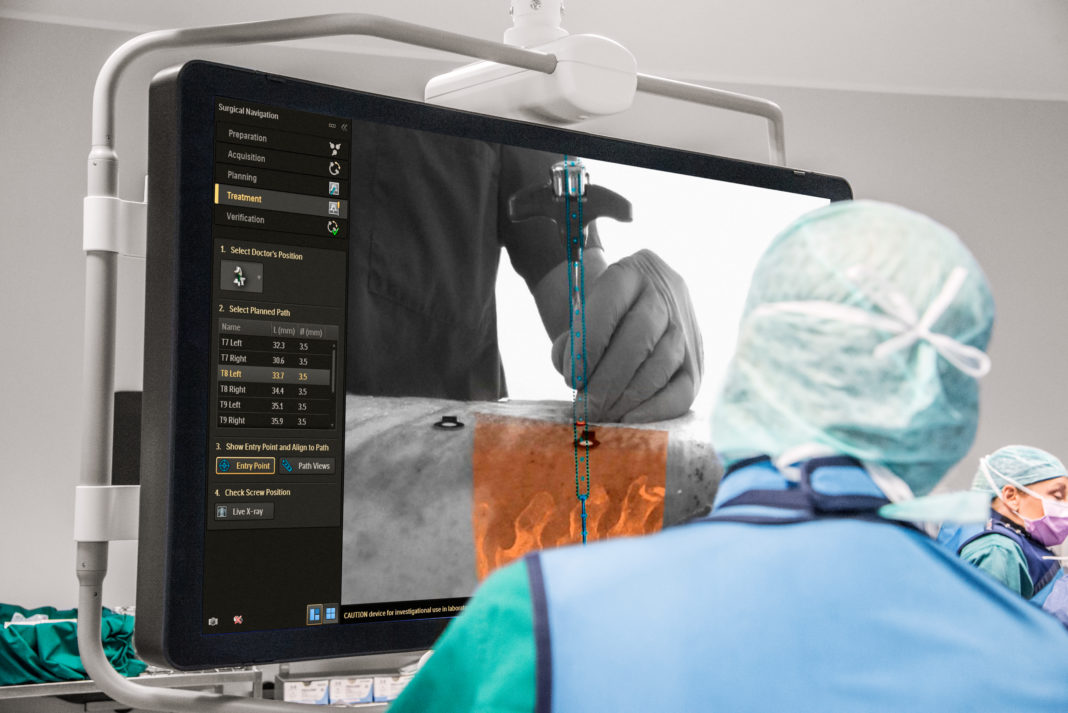A virtual reality guide for spinal surgery is under development by Philips. The Dutch company recently announced it has developed real-time augmented reality (AR) technology to guide spinal surgery, making these risky procedures less invasive. The technology would make spinal surgery less invasive, shortening recovery time and improving overall outcomes. This is just one of many advancements in medical technology driven by virtual reality in recent years.
Spinal surgery has been moving from “open surgery” to less invasive procedures over the last few years. The open procedure requires large incisions and the insertion of screws. The latest advancements allow doctors to use smaller incisions and tiny surgical instruments, in combination with CT scans and AR and VR imaging, to accomplish the same goals.

Nearly all surgeries that are performed using minimally invasive techniques are better for the patient. Patients experience less post-operative pain and discomfort, and studies have shown they require lower doses of pain medication during recovery. Their hospital stays are typically shorter too. And because incisions are smaller with minimally invasive procedures, there is less damage to tissue and less scarring. There are no long incisions needed and surgeons don’t need to cut through muscle to work, so less healing time is needed.
Studies also show that procedures in which surgeons are video-assisted are more accurate because they are better able to visual and magnify internal organs. For a lengthy and high-risk procedure that typically requires a long recovery period, such as spinal surgery, this is good news all around.
AR Technology Makes Surgery Faster and More Efficient
According to Andreas Seekamp, a medical professor at the University of Schleswig-Holstein, “Since we no longer do open spine surgery, we depend on imaging and image quality.” The new technology uses 3D X-ray and optical imaging to provide and “augmented reality view of the inside and outside of a patient. Seekamp has also stated his surprise over how quickly operations occur using the technology, stating “I had expected the operations to take a little longer in the hybrid OR, but in fact just the opposite is true.”
Dr. Skúlason of the Landspitali University Hospital in Iceland further describes the technology, “This new technology allows us to intraoperatively make a high-resolution 3D image of the patient’s spine, plan the optimal device path, and subsequently place pedicle screws using the system’s fully-automatic augmented-reality navigation. We can also check the overall result in 3D in the OR without the need to move the patient to a CT scanner. And all this can be done without any radiation exposure to the surgeon and with minimal dose to the patient.”
Evidence is showing the technology really is improving the spinal surgery industry. According to a study published in SPINE, the tech produced better overall accuracy than conventional free-hand surgery, with about 85 percent accuracy versus 64 percent. Philips has installed about 750 hybrid operating rooms around the world and the company plans to add an additional 10 locations featuring the technology.
Alternative and Virtual Reality Tools Continue to Gain Momentum in Medicine
Alternate and virtual reality continue to gain popularity in the field of medicine and in surgery. The first ever surgery to be lived streamed using VR occurred in April 2016. More and more surgeons are using AR and VR apps to help them prepare for operations. Many surgeons feel better equipped to do their jobs and offer patient-specific care because of VR tech and the trend is expected to grow in the coming years. In addition to spinal surgery, VR technology is being used in cardiac procedures, and researchers are looking for ways to incorporate into neurological surgery and cancer care.





